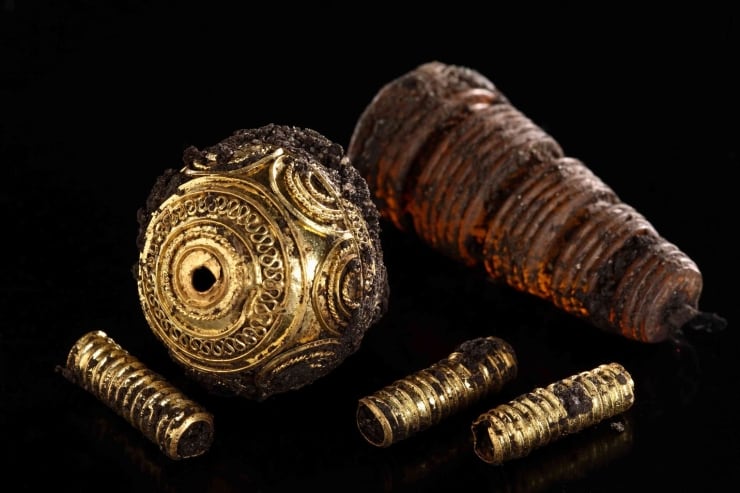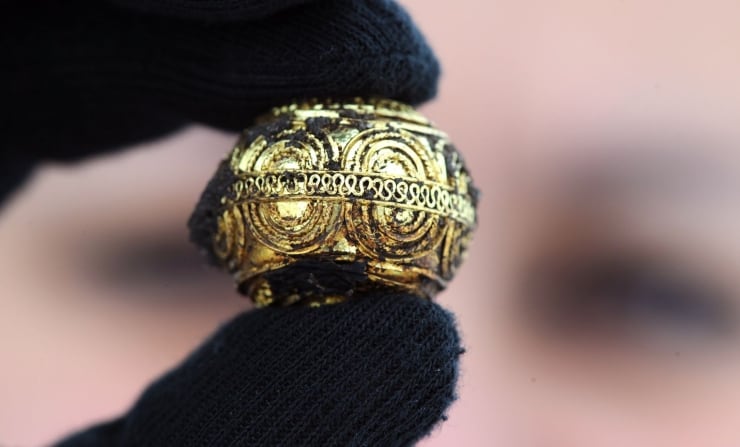
26.12.2010 Celtic tomb with golden jewels
Categories: Calendar , Nálezy nejenom s detektorem v západní Evropě
The gold and amber jewellery was contained in a tomb discovered by archaeologists in December 2010 in Germany. Inside was also the skeleton of a Celtic princess. The burial chamber was lifted whole by cranes and transported for further research.
The 2,600-year-old Celtic tomb was found by archaeologists a decade ago in Heuneburg, Germany. The five-by-four-metre burial chamber was in excellent condition and contained a treasure chest of gold and amber jewellery.
These helped archaeologists determine a more precise age for the tomb. The remains found inside also helped. They belonged to a member of the nobility who lived around the seventh century. Archaeologists began a thorough analysis immediately after the discovery.
The work was made easier by the fact that the tomb was lifted out of the ground in one piece with the help of two cranes. The tomb was transported to the laboratory of the Office for the Preservation of Monuments in Stuttgart. The tomb weighed eighty tons.
The intact oak allowed archaeologists to determine the exact age of the tomb by dating the year rings. This is rarely possible with Celtic finds because the Celts left behind buildings usually made of wood and clay that have long since decayed.
One of the oldest settlements north of the Alps was located on the Heuneburg site. For archaeologists, it is a valuable source of information about the Celtic culture of the Iron Age. A time when wealth and population grew rapidly. The local Celtic citadel was surrounded by a wooden wall, which was typical of Celtic construction in the seventh century.
The artefacts found were exhibited two years ago in a Berlin museum. including the amber and gold jewellery found near the princess' skeleton. The burial chamber of the "Celtic princess" discovered in 2010 remains one of the most important archaeological finds of recent decades in Germany.
The results of the research in the following years have revealed so many artifacts and information about Celtic culture that experts have called it an "archaeological milestone." The oak floor of the tomb and other organic materials were unusually well preserved. Archaeologists were therefore able to date the tomb precisely to 583 BC.
The jewels worn by the Celtic nobility came from Italy and elsewhere, proving that Heuneburg was one of the most important Celtic settlements in Germany. Between 620 and 480 BC it was an important trading centre.




Sources: www.thehistoryblog.com, www.spiegel.de, www.digitaljournal.com
The article is included in categories:



